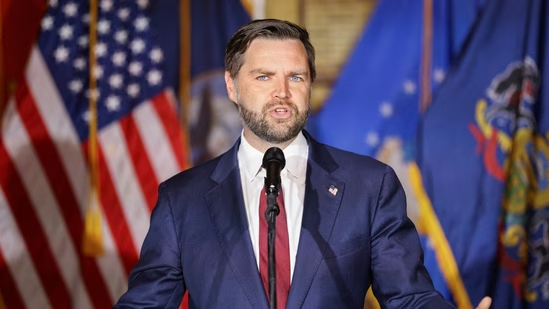
During a recent diplomatic visit to India, U.S. Vice President JD Vance described Prime Minister Narendra Modi as a “strong and strategic negotiator,” emphasizing the Indian leader’s role in shaping the future of U.S.-India trade relations. Vance’s remarks, delivered during a gathering in Jaipur, Rajasthan, underline the growing significance of economic collaboration between the two democracies.
Vance commended Prime Minister Modi as a “strong and principled leader,” applauding his focus on advancing India’s interests during global negotiations. “It’s clear that Prime Minister Modi knows how to stand firm for his country. That kind of leadership is respected and welcomed in any meaningful partnership,” Vance remarked.
The visit coincides with an important period for U.S.-India trade talks. At the center of the discussions is a 26% tariff the U.S. has placed on certain Indian goods. Though the tariff has been paused for 90 days, both countries are working against the clock to finalize a long-term trade agreement. India, on its part, is seeking concessions and a potential rollback of tariffs in exchange for expanded defense deals and other strategic partnerships.
Aside from trade, the leaders discussed enhanced cooperation in defense, technology, clean energy, and global supply chain diversification. India is establishing itself as a trustworthy ally to the United States firms looking to move operations away from China, especially in sectors like semiconductors, renewable energy, and pharmaceuticals.
Vance’s own tough stance on China aligns well with India’s economic and geopolitical goals. Indian officials are optimistic that this alignment could accelerate deeper bilateral engagement, especially in high-tech and strategic industries.
The tone of the visit was not limited to politics. Accompanied by his Indian-American wife and their children, Vance also embraced India’s rich culture and heritage. His family’s presence brought a personal dimension to the trip, highlighting the cultural ties and people-to-people connections between the two nations.
In addition to private discussions, Vance is expected to deliver a public address in Jaipur outlining the roadmap for strengthening economic and technological cooperation. His message is likely to stress the importance of trust, fairness, and mutual benefit in U.S.-India trade relations.
As the 90-day grace period on U.S. tariffs nears its end, the urgency to reach a final agreement grows. A successful resolution would mark a milestone in bilateral relations and set the stage for a robust economic partnership in the years ahead.
This visit highlights the mutual commitment and common goals shared by India and the United State— two democracies united by common interests and a desire to promote global stability, innovation, and prosperity.


